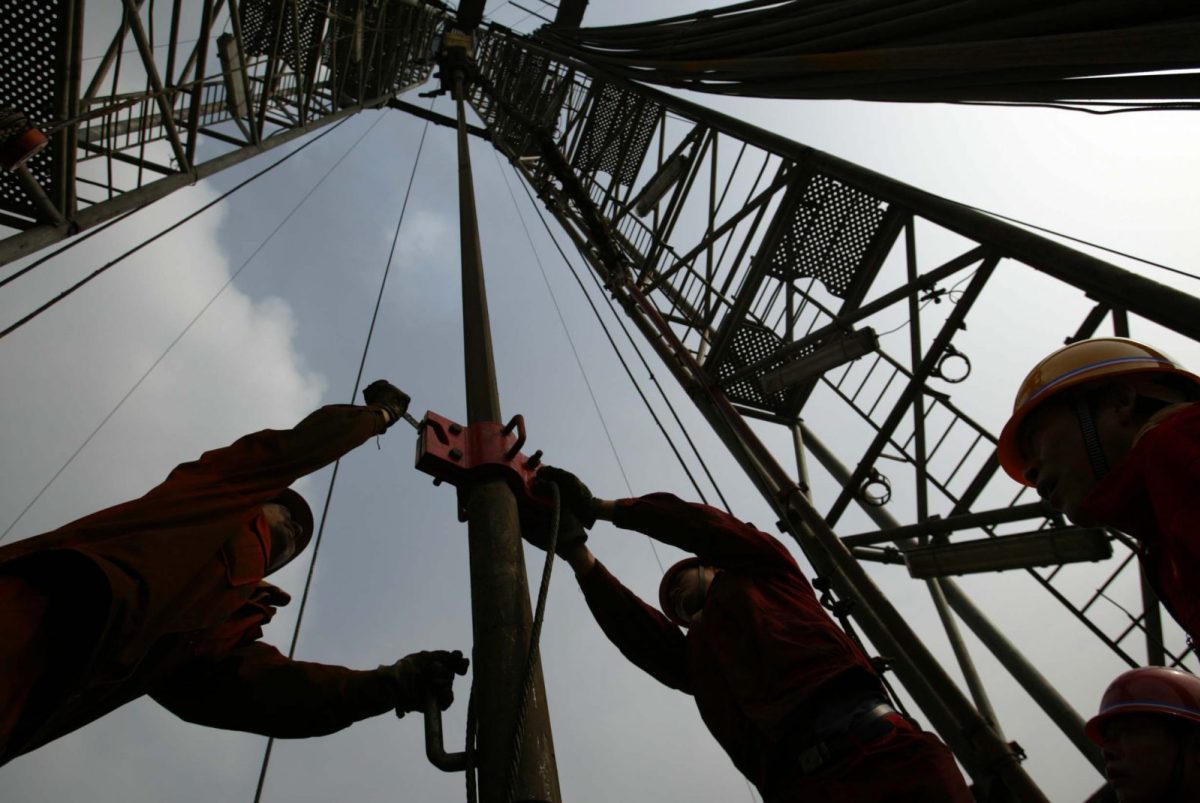Oil prices plunged Monday to an 18-year low as the number of novel coronavirus cases worldwide surged past 750,000, reinforcing worries about the impact of the pandemic on the global economy.
Meanwhile, US and European stock markets moved higher despite the prospect of much of the world remaining in confinement for weeks to come.
Crude oil struck the lowest levels since 2002, with Brent North Sea tumbling to $21.65 a barrel at one point. The benchmark US contract, WTI, briefly fell below $20.00.
“Estimates for the (oil) demand side are being revised downwards on an almost daily basis, while on the supply side there is still no sign of any reconciliation between Saudi Arabia and Russia” in their price war, Commerzbank said in a client note.
There are warnings oil could sink even further as storage tanks around the world approach full capacity.
Saudi Arabia, meanwhile, announced it would raise exports by 600,000 barrels per day to a record 10.6 million in May.
However, US President Donald Trump held a phone call with his Russian counterpart Vladimir Putin where they discussed oil prices as US producers are reeling.
“If nothing comes out of Trump’s call to Putin, oil prices could easily drop a couple dollars,” OANDA market analyst Edward Moya said.
The Kremlin said Russian and US energy officials would hold consultations on the global oil market, but the news failed to lift WTI considerably and Brent fell further.
In Asia, stock markets mostly fell following the steep drop on Wall Street and in Europe on Friday.
Australia was out on its own – its stock market surging 7% as the country’s virus infections slowed. After trading closed in Sydney, the government unveiled an income-support plan worth US$80 billion.
Falling confidence
European stocks spent much of the day in the red on indications of the economic cost of the crisis, but rose into positive territory as Wall Street pushed higher, even though jubilation over last week’s enormous US stimulus package has largely faded.
Major US indices jumped more than 3% as some analysts said investors may be adjusting to the situation.
“Investors might be entering the ‘acceptance’ phase of the crisis,” said JJ Kinahan, chief market strategist at TD Ameritrade.
“People know this is going to go on a while and accept what doctors say about how things could get a little worse, but they seem to feel reassured by the Fed and Congress taking quick action to give the economy a security blanket.”
Polling from Morning Consult showed US consumer confidence remained “relatively stable” over the weekend after Trump signed a $2 trillion federal relief package.
Still, many analysts expect markets to be rocky for the foreseeable future as more terrible economic data surfaces.
A note from IHS Markit Monday significantly lowered its forecast for the US economy, projecting a contraction of 5.4% in 2020, with a lengthy recovery before returning to pre-pandemic levels.
“The risks remain overwhelmingly on the downside and further downgrades are almost assured,” IHS said.
Governments and central banks have acted to shore up the global economy, pledging around $5 trillion in stimulus support, with China on Monday joining the party by lowering bank borrowing costs and pumping billions of dollars into financial markets, while Singapore also eased rates.
AFP
























